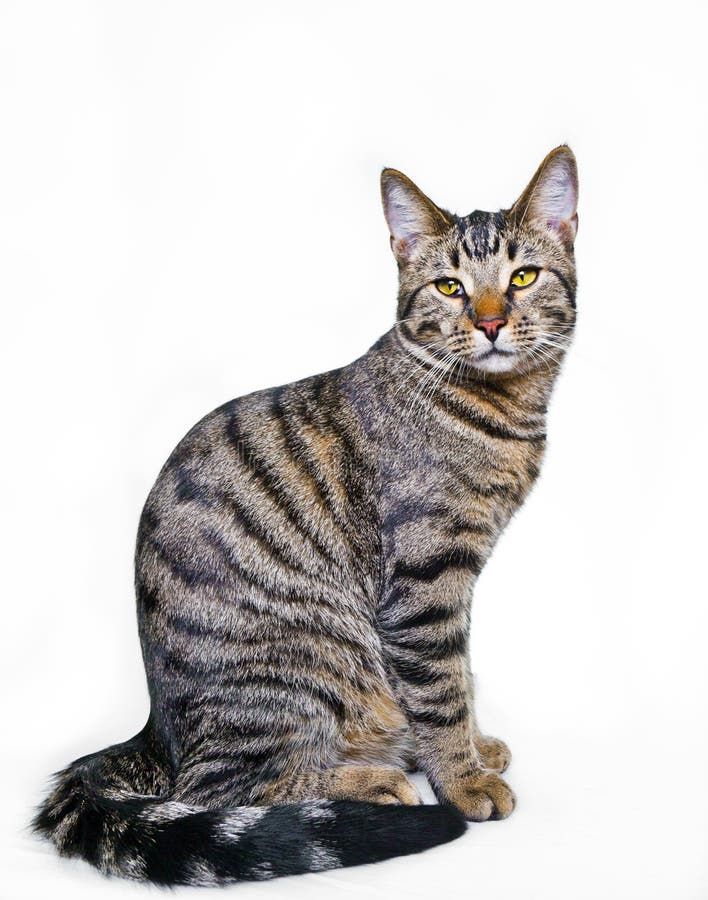

The four tabby patterns come in the following colour schemes. Melanin: Colored pigment found in the hair, iris of eye and the skin. Masking: A genetic term to describe the actions of a gene such as the affect of dominant white that masks other genes, thus concealing the genotype (see Cat Genetics). The stripes should not break up into spots. Vertical unbroken thin lines instead of swirls. The stripes are narrow and may be continuous or broken into bars and spots on the flanks and stomach. The mackerel tabby pattern has vertical, gently curving stripes on the side of the body. All Himalayan Persians display base coats that range from white to fawn with coloring restricted to the points.Mackerel Tabby - coat pattern with narrow stripes extending down the spine and flanks

The Himalayan division is one of the largest and most diverse, but all members must exhibit bright blue eyes. Eventually, they were accepted as a Persian variation, rather than a cross or a separate breed. Himalayan Persians were created by crossing Siamese cats with Persians to bestow the Siamese color pattern on Persian cats. Image Credit: Eric Isselee, Shutterstock Himalayan Division Calico Persians have patches of black and red strewn over a white base coat. They usually have color on the top while their bellies and legs are white. Van Persians have white coats with up to two spots of color limited to the head, limbs, and tail. There are just two patterns in the Bicolor division, though they can display a range of colors. Image Credit: CKYN stock photo, Shutterstock Silver tabbies can have green, hazel, or copper eyes, but all other tabby Persians have copper eyes. Patched tabbies do not come in red, cream, or cameo. Patched tabbies are mackerel or classic tabbies with the addition of red patches. Mackerel Persians have narrow pencil-like stripes that run around their bodies. Classic tabbies have bull’s eye markings on their sides. There are three patterns recognized in the tabby division, which are patched, classic, and mackerel.

Image Credit: Linn Currie, Shutterstock Tabby Division Cameo, shell, and shaded Persians display coats that have multi-colored hairs with tips that are a separate color from the contrasting undercoat. However, once the cat starts to move, the coat opens up, showing the stark contrast of a bright white undercoat. When the cat is still, it appears to have a solid-colored coat. Image Credit: Linn Currie, Shutterstock Smoke and Shaded Division The eyes of silver or golden Persians are green or blue-green with black rims. Chinchilla Persians are a brilliant white with black tipping. Shaded Persians appear to have even black shading over their darker parts. They come in chinchilla and shaded varieties. Silver and gold Persians are some of the most exquisite specimens in the breed. Image By: ANURAK PONGPATIMET, Shutterstock Some colors, such as blue, white, and black, are rather commonplace among the breed, while chocolate and lilac are much rarer, having been produced by mixing with Himalayan Persians. Other solid-colored Persians all have copper eyes. White solid-colored Persians can have three different eye colors: copper, blue, or one of each. Persian cats of the solid classification sport only a single coat color that’s uniform all over. Today, the Persian breed is diverse, and there are seven different divisions of Persian cats that are recognized by the Cat Fanciers’ Association, adding up to more than 60 different colors that you can get a Persian cat in. For instance, that trademark flat face is a more recent addition that wasn’t part of the breed when it was first originating. Known for their luxurious long coats and sweet personalities, Persian cats have gone through many changes over the years. Persian cats are one of the most popular cat breeds in the world, and they have been for a very long time.


 0 kommentar(er)
0 kommentar(er)
